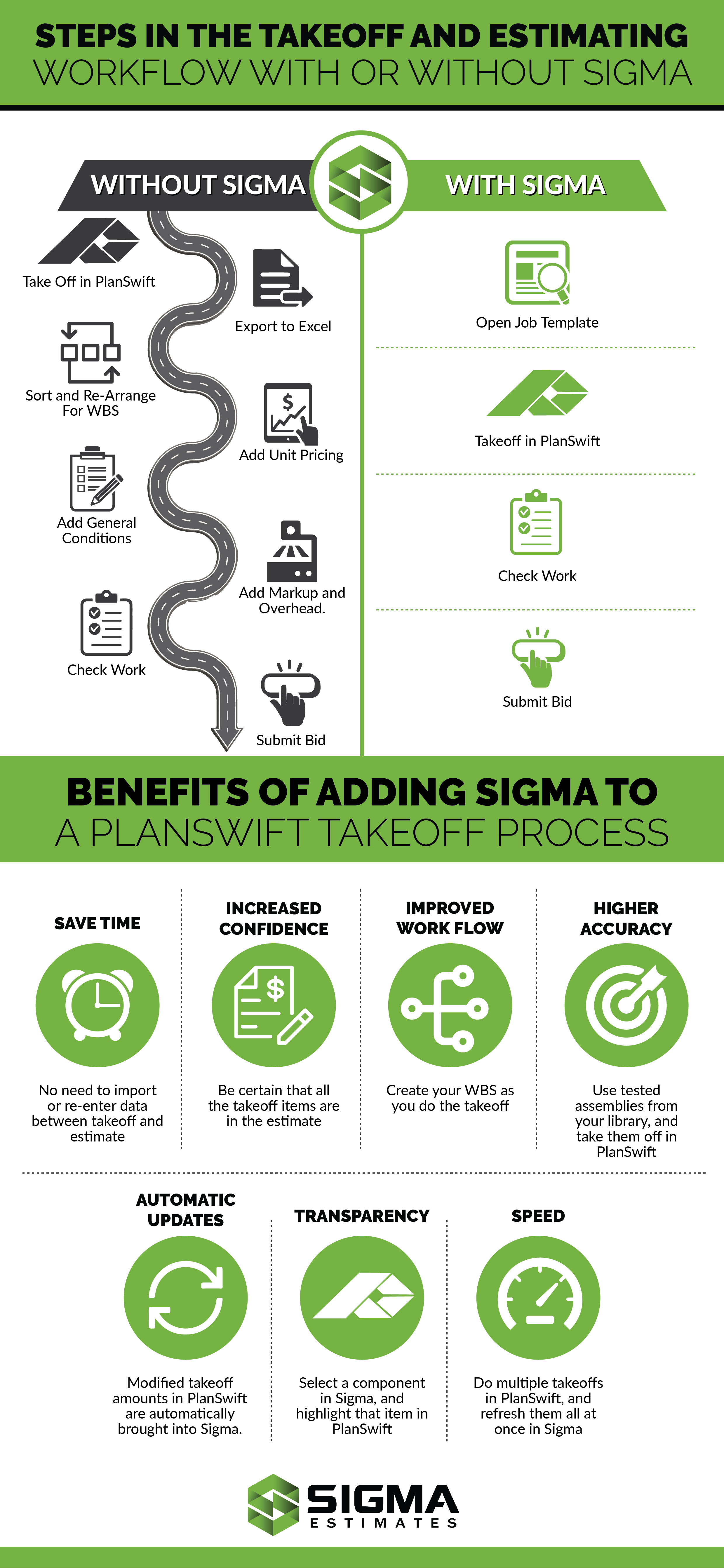 Long before breaking ground, laying bricks or pouring a foundation one of the most crucial steps in a construction job happens: the estimating process.
Long before breaking ground, laying bricks or pouring a foundation one of the most crucial steps in a construction job happens: the estimating process.
This is where material costs, salaries, rentals, and equipment come together. Getting estimating right is absolutely crucial, both because it strategically influences your sourcing, margins, and ability to plan and lead your workforce. It is also a complex task, carrying risk as well as rewards and, therefore, adding a burden of stress to the estimating personnel.
As such, estimating is about much more than the right price of an item, assembly or project. It is a professional process, where construction management needs to focus to improve business results and workforce satisfaction. The process consists of three overall steps: the takeoff, the estimating, and the proposal.
During takeoff, you establish the quantities or amount of material needed for the project. Determining the sourcing cost of material (unit costs times quantity), the man hours and equipment needed is the estimating, which is then transformed into a proposal.
Pinpoint accuracy during the takeoff and estimation process is crucial. If a contractor estimates too high, they might lose the job because the client knows of cheaper options. On the other hand, if the estimate is too low, the contractor is going to cut into their profits and have expenses that simply were not accounted for beforehand.
“Contrary to what most people think, estimators are not infallible,” said Bill Carey, a senior estimator and customer service representative at Sigma Estimates.
Takeoff and estimating are both time-consuming processes, even in the digital age where software options are available. But there are some programs available to contractors that will save them from counting every single wall outlet on a blueprint and help them arrive at an airtight cost figure without any errors.
Yet, this process can be complicated as contractors use a litany of programs to complete the two tasks. Often times, users will complete their takeoff in one program before importing that document over to their estimating service. Often the estimating is then done using Excel, instead of a professional estimating product.
Not only is this cumbersome, but it can also lead to errors in the final estimate. Many companies are coming together to introduce integrations between takeoff and estimating software to ensure that nothing is lost in translation between the two process steps.
Sage Estimating 300, a widespread option, can integrate with eTakeoff Bridge, a takeoff program that features a simple drag-and-drop approach. Procore, a cloud-based project management software can incorporate ProEst, a cost estimating and digital takeoff program.
 PlanSwift, an industry leader in takeoff software, has recently partnered with Sigma Estimates, a best-of-breed estimating software that is quickly gaining traction with professional estimators. This partnership provides users with an elegant integration between takeoff and estimating.
PlanSwift, an industry leader in takeoff software, has recently partnered with Sigma Estimates, a best-of-breed estimating software that is quickly gaining traction with professional estimators. This partnership provides users with an elegant integration between takeoff and estimating.
“I really love the platform,” said Jack Rector, the construction and development manager at Atlanta Commercial Property Services. “It’s so easy to use.”
Rector is an experienced builder (with over 35 years of experience) and estimator by trade. One of the projects he used integrated programs on is a $40 million, 400,000 square foot job for L3 Technologies in Salt Lake City. One of the highlights is how he can seamlessly switch between the two programs.
“It really helps me stay focused and gives me one platform I can use so I’m not bouncing around all the time,” Rector said.
This single platform approach to the takeoff and estimating process is a crucial part of the integration between Sigma Estimates and PlanSwift.
“The main problem we are fixing with this integration is connecting the costing of your particular items in your estimates to the quantities of your items,” said Carey. “Before our integration, you had two separate camps that didn’t talk to one another.”
PlanSwift allows users to complete their takeoff on a 2D representation of a project’s blueprints. When exporting the takeoff to Sigma Estimates, it only takes a click to ensure that the changes in a takeoff document are reflected in the estimate.
According to Carey, this saves users both time and money. Rector can attest to this. He is extremely confident in his new estimates and knows that the integration allowed nothing to be lost. He also finds it a better overall package than other collaborations.
“This is a lot easier to use than other programs,” he said. “And I’ve used a lot of them.”
This article was brought to you by Sigma Estimates. Next Wednesday, the company is hosting a webinar about this integration with PlanSwift. You can find more information here. You can also sign-up for a free trial here.

Discussion
Be the first to leave a comment.
You must be a member of the BuiltWorlds community to join the discussion.